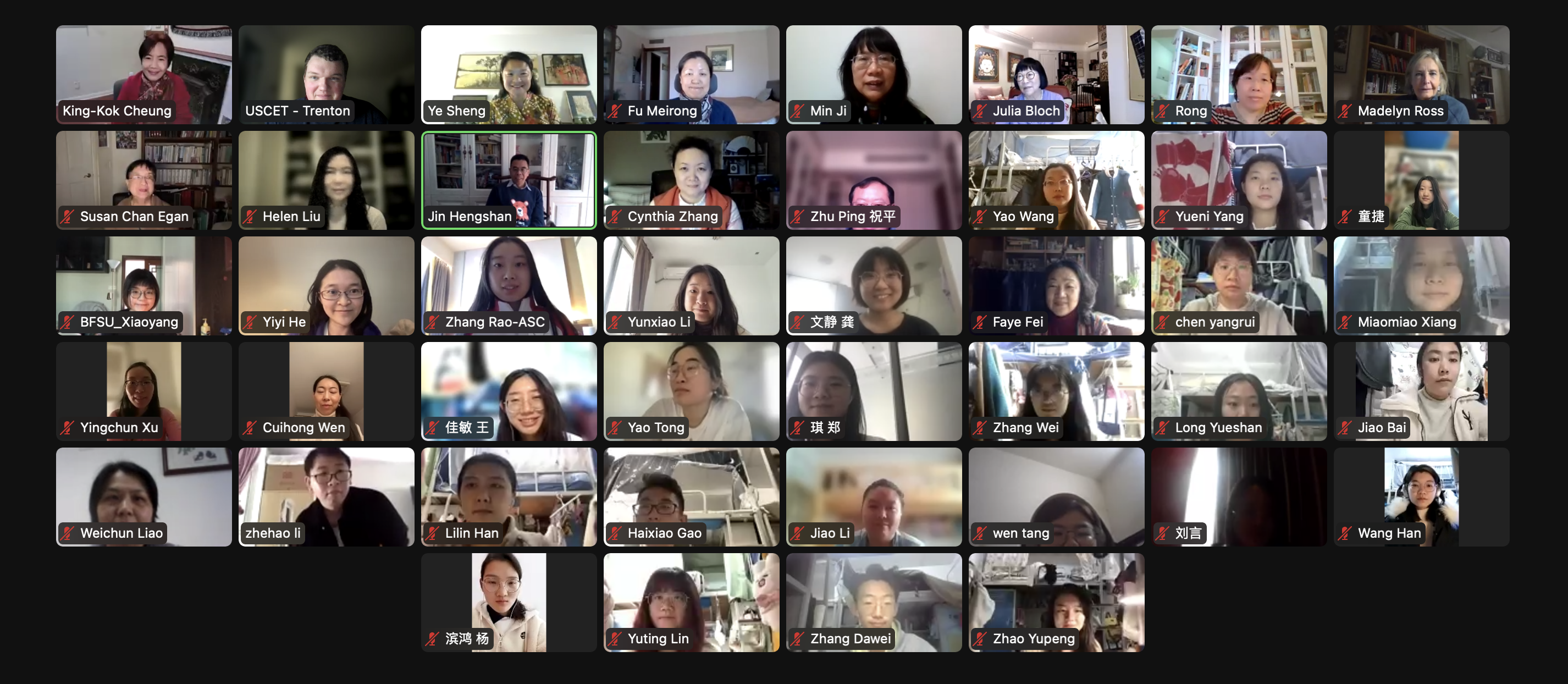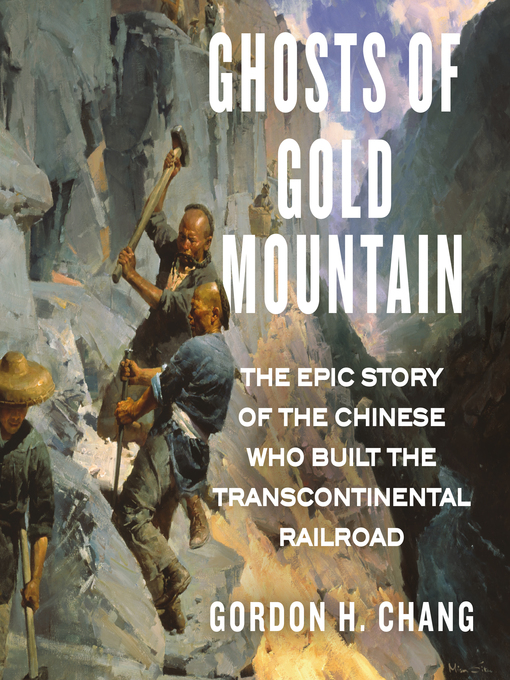
On March 4, 2022, USCET hosted a lively meeting of the Asian American Authors Book Club, featuring Professor Gordon H. Chang, Senior Associate Vice Provost for Undergraduate Education and Professor in Humanities and History at Stanford University. The webinar focused on Professor Chang’s 2020 book Ghosts of Gold Mountain: The Epic Story of the Chinese Who Built the Transcontinental Railroad, an unprecedented work that recovers the stories of Chinese railroad workers and recognizes their efforts in building America, with opening and a closing remarks made respectively by Ambassador Julia Chang Bloch, executive chair of USCET, and Professor King-Kok Cheung, special advisor to USCET and Professor of English and Asian American Studies at UCLA. Part of the “Chinese Railroad Workers in North America Project” at Stanford University, a project Professor Chang co-directed with Professor Shelley Fisher Fishkin, this book is a major addition to the scholarly work on Chinese laborers who helped build the First Transcontinental Railroad.

Professor Chang began by explaining his motivation behind authoring Ghosts of Gold Mountain. Growing up in Oakland as a fourth-generation Chinese American, he had observed the lack of information about Chinese workers in the San Francisco Bay area. Even at Stanford, a university with close historical ties to the Transcontinental Railroad, relevant archives were virtually non-existent. By writing Ghosts of Gold Mountain, a non-fiction work of history, Professor Chang aimed to “reconstruct Chinese railroad workers’ lived experiences.”
Professor Chang retold the story of Chinese railroad workers to the Book Club audience through a riveting slideshow, including historic photographs that captured the construction process of the First Transcontinental Railroad. He noted that the railroad played an important role in American history and was described by Americans at the time as the incarnation of a “continental empire.” Not only did it bring together the American East and West, it helped link North America to Asia, making the railroad a catalyst of 19th century Western industrial revolutions and economic development. But while Chinese immigrants were the major workforce behind one of the nation’s biggest infrastructure projects, they were essentially excluded from the history and documentation process. According to Professor Chang, be it in the famous photographs of Promontory Summit, or the incredible feats of construction across cliffs and ravines of the High Sierras, Chinese workers rarely appeared or received credit for their work on the massive project.
Though it was difficult to recover the railroad workers’ voices, Professor Chang noted the archeological methods that have successfully recovered parts of the workers’ lived experiences, including the material culture along the rail line. On the High Sierras, for instance, archeologists have located remains of Chinese ceramics used by the laborers 150 years ago. Moreover, as more material culture has been discovered, more and more Chinese Americans whose ancestors worked on the railroad have become aware of and proud of their heritage.
Professor Chang answered a number of questions from the audience following his prepared remarks, including one raised by Professor King-Kok Cheung, who wondered whether the absence of Chinese railroad workers in the photographs could be due to their fear of bad luck. Professor Chang agreed that this may have been a factor, but added that this fear of modern technologies was not universal, as a number of Chinese laborers were comfortable having their photos taken in a studio to pass on to their descendants. Chinese American writer Huaiyu Liu asked whether emotional factors played a part in this “historical amnesia,” and to what extent the workers were reluctant to pass on memories of their “hardship and humiliating experience.” Professor Chang explained that some Chinese laborers had come to America to seek their fortune, and were indeed not eager to be known for doing hard labor on a railroad.
USCET applauded the successful virtual re-launch of the Asian American Authors Book Club with Professor Gordon Chang’s inspiring presentation on the Ghosts of Gold Mountain and the vibrant discussion that followed. By recovering the voices of the long neglected Chinese railroad workers, the meeting celebrated and paid tribute to the accomplishment of these early Chinese Americans. As Professor King-Kok Cheung remarked at the close of the discussion, the Chinese workers with their hearts in two places, half in China and the other half in America, helped to bridge two worlds and bring them together.
